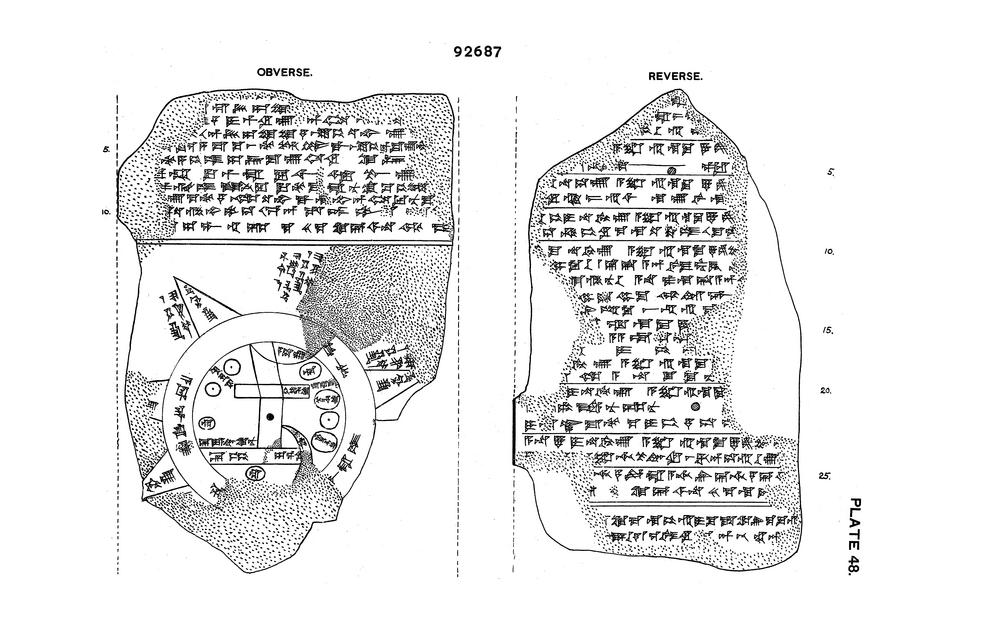According to Explorersweb, a 3,000-year-old clay tablet, also known as the Babylonian Imago Mundi, is attracting the attention of researchers with the hypothesis that it may contain instructions related to ancient legends.
Discovered in 1882 by archaeologist Hormuzd Rassam in the ancient city of Sippar in Mesopotamia (now Iraq), the clay tablet is now housed in the British Museum.
Although it is about the size of a palm, Imago Mundi is full of mysteries. Scientists believe that the cuneiform writing on both sides, along with symbols, is intended to represent a Babylonian map of the world.

On the front of the tablet is a circular map depicting Mesopotamia, with important landmarks such as the Euphrates River and the city of Babylon. Surrounding this area are two concentric circles known as the “Bitter Rivers.” This detail symbolizes the natural boundary separating the known world from the unexplored lands.
Outside the two circles are triangles, which are believed to represent distant mountain ranges or mystical lands. According to researchers, this image reflects how the Babylonians envisioned the universe and what lay beyond their understanding.
The back of the tablet is covered with cuneiform writing that tells of mysterious lands beyond the “Bitter River.” The text blends fact and myth, with tales of giant birds and trees that bear precious gems.
Researchers believe this could be a guide for brave explorers who want to cross the circle to explore distant lands.

One particularly striking detail is the description of a journey to a strange land where the traveler must travel “seven miles to see something as thick as a parsiktu pot.” The word parsiktu particularly interested Irving Finkel, a curator at the British Museum.
This is an extremely rare word, which has only appeared on one other clay tablet. It describes a giant boat built by a Noah-like figure in Babylonian mythology. According to this legend, the boat drifted and ran aground on the other side of a distant mountain range beyond the “River of Bitterness.”
Researcher Finkel believes that the clay tablet does not directly mention Noah's Ark, but the mysterious descriptions on its back may be instructions for a journey to find traces of a legendary boat.
This opens up a new perspective on the interplay between ancient cultures, suggesting that legends such as the story of Noah's Ark may have existed in different forms across ancient civilizations.
This discovery not only helps to shed more light on the beliefs and thinking of the Babylonians, but also evokes deep connections between ancient legends, thereby showing the power of human imagination in explaining the world around us.











